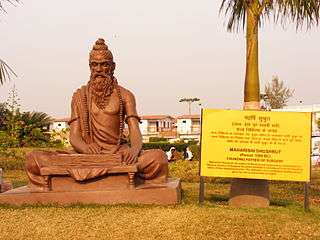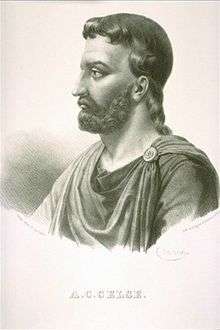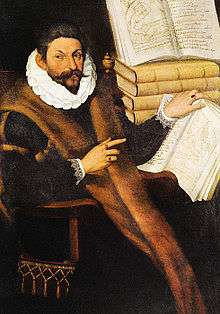History of rhinoplasty

The history of rhinoplasty (Greek: ῥίς rhis, nose + πλάσσειν plassein, to shape), began in antiquity. Surgical rhinoplasty began in ancient Egypt and ancient India. In India, it was developed by the ayurvedic physician Sushruta (c. 800 BC). Non-surgical rhinoplasty was a later development, with the history of non-surgical rhinoplasty occurring mainly in the 21st century.
Surgical rhinoplasty
Antiquity

Treatments for the plastic repair of a broken nose are first mentioned in the Edwin Smith Papyrus,[2] a transcription of an Ancient Egyptian medical text, the oldest known surgical treatise, dated to the Old Kingdom from 3000 to 2500 BC.[3] Rhinoplasty techniques were carried out in ancient India by the ayurvedic physician Sushruta (c. 800 BC), who described reconstruction of the nose in the Sushruta samhita (c. 500 BC), his medico–surgical compendium. The physician Sushruta and his medical students developed and applied plastic surgical techniques for reconstructing noses, genitalia, earlobes, et cetera, that were amputated as religious, criminal, or military punishment. Sushruta also developed the otoplastic technique for reconstructing an earlobe with skin from the cheek, and the forehead flap rhinoplasty procedure that remains contemporary plastic surgical practice. In the Sushruta samhita compendium, the physician Sushruta describes the (modern) free-graft Indian rhinoplasty as the Nasikasandhana, wherein:
The portion of the nose to be covered should be first measured with a leaf. Then, a piece of skin of the required size should be dissected from the living skin of the cheek, and turned back to cover the nose, keeping a small pedicle attached to the cheek. The part of the nose to which the skin is to be attached should be made raw, by cutting the nasal stump with a knife. The physician then should place the skin on the nose and stitch the two parts swiftly, keeping the skin properly elevated, by inserting two tubes of eranda (the castor-oil plant) in the position of the nostrils, so that the new nose has proper shape. The skin thus properly adjusted, it should then be sprinkled with a powder of liquorice, red sandal-wood, and barberry plant. Finally, it should be covered with cotton, and clean sesame oil should be continually applied. When the skin has united and granulated, if the nose is too short or too long, the middle of the flap should be divided, and an endeavour made to enlarge or shorten it. (Sushruta samhita 1.16)[4]
Classical antiquity


During the Roman Empire (27 BC – AD 476) the encyclopaedist Aulus Cornelius Celsus (c. 25 BC – AD 50) published the 8-tome De Medicina (On Medicine, c. AD 14), which described plastic surgery techniques and procedures for the correction and the reconstruction of the lips, the ears, the nose, et cetera, and for the amputation of diseased and damaged parts of the human body.[5]
At the Byzantine Roman court of the Emperor Julian the Apostate (AD 331–363), the royal physician Oribasius (c. AD 320–400) published the 70-volume Synagogue Medicae (Medical Compilations, AD 4th century), which described facial-defect reconstructions that featured loose sutures that permitted a surgical wound to heal without distorting the facial flesh; how to clean the bone exposed in a wound; debridement, how to remove damaged tissue to forestall infection and so accelerate healing of the wound; and how to use autologous skin flaps to repair damaged cheeks, eyebrows, lips, and nose, to restore the patient’s normal visage.
The Middle Ages

Nonetheless, during the centuries of the European Middle Ages (AD 5th – 15th centuries) that followed the Imperial Roman collapse (AD 476), the 5th-century BC Asian plastic surgery knowledge of the Sushruta samhita went unknown to the West until the 10th century AD, with the publication, in Old English, of the Anglo-Saxon physician’s manual Bald's Leechbook (c. AD 920) describing the plastic repair of a cleft lip; as a medical compendium, the Leechbook is notable for categorizing ailments and treatments as internal medicine and as external medicine, for providing herbal medical remedies, and for providing supernatural incantations (prayers), when required.
In the 11th century, at Damascus, the Arab physician Ibn Abi Usaibia (1203–1270) translated the Sushruta samhita from Sanskrit to Arabic. In due course, Sushruta’s medical compendium travelled from Arabia to Persia to Egypt, and, by the 15th century, Western European medicine had encountered it as the medical atlas Cerrahiyet-ul Haniye (Imperial Surgery, 15th century), by Şerafeddin Sabuncuoğlu (1385–1468); among its surgical techniques featured a breast reduction procedure.[6][7]
16th century

In Italy, Gasparo Tagliacozzi (1546–1599), professor of surgery and anatomy at the University of Bologna, published Curtorum Chirurgia Per Insitionem (The Surgery of Defects by Implantations, 1597), a technico–procedural manual for the surgical repair and reconstruction of facial wounds in soldiers. The illustrations featured a re-attachment rhinoplasty using a biceps muscle pedicle flap; the graft attached at 3-weeks post-procedure; which, at 2-weeks post-attachment, the surgeon then shaped into a nose.[8]
18th century
.jpg)
In time, the 5th-century BC Indian rhinoplasty technique — featuring a free-flap graft — was rediscovered by Western medicine in the 18th century, during the Third Anglo–Mysore War (1789–1792) of colonial annexation, by the British against Tipu Sultan, when the East India Company surgeons Thomas Cruso and James Findlay witnessed Indian rhinoplasty procedures at the British Residency in Poona. In the English-language Madras Gazette, the surgeons published photographs of the rhinoplasty procedure and its nasal reconstruction outcomes; later, in the October 1794 issue of the Gentleman's Magazine of London, the doctors Cruso and Findlay published an illustrated report describing a forehead pedicle-flap rhinoplasty that was a technical variant of the free-flap graft technique that Sushruta had described some twenty-three centuries earlier:
A thin plate of wax is fitted to the stump of the nose, so as to make a nose of good appearance; it is then flattened and laid on the forehead. A line is drawn around the wax, which is then of no further use, and the operator then dissects off as much skin [the flap] as [the wax plate] had covered, leaving undivided a small slip [the flap-pedicle] between the eyes. This slip preserves the blood circulation till a union has taken place between the new and the old parts. The cicatrix of the stump of the nose is next pared off, and, immediately behind the new part, an incision is made through the skin, which passes around both alae, and goes along the upper lip. The skin, now brought down from the forehead, and being twisted half-around, is inserted into this incision, so that a nose is formed with a double hold above, and with its alae and septum below, fixed in the incision. A little Terra Japonica (pale-catechu) is softened with water, and after being spread on slips of cloth, five or six of these are placed over each other to secure the joining. No other dressing, but this cement, is used for four days. It is then removed, and cloths dipped in ghee are applied. The connecting slip of skin is divided at about the twentieth day, when a little more dissection is necessary to improve the appearance of the new nose. For five or six days after the operation, the patient is made to lie on his back, and on the tenth day, bits of soft cloth are put into the nostrils to keep them sufficiently open. This operation is always successful. The artificial nose is secured and looks nearly as well as the natural nose, nor is the scar on the forehead very observable after a length of time. (Gentleman’s Magazine of London, October 1794)[9]
19th century

Pre-dating the Indian Sushruta samhita medical compendium is the Ebers Papyrus (c. 1550 BC), an Ancient Egyptian medical papyrus that describes rhinoplasty as the plastic surgical operation for reconstructing a nose destroyed by rhinectomy, such a mutilation was inflicted as a criminal, religious, political, and military punishment in that time and culture.[10] In the event, the Indian rhinoplasty technique continued in 19th-century Western European medicine; in Great Britain, Joseph Constantine Carpue (1764–1846) published the Account of Two Successful Operations for Restoring a Lost Nose (1815), which described two rhinoplasties: the reconstruction of a battle-wounded nose, and the repair of an arsenic-damaged nose. (cf. Carpue’s operation)[4][6]

In Germany, rhinoplastic technique was refined by surgeons such as the Berlin University professor of surgery Karl Ferdinand von Gräfe (1787–1840), who published Rhinoplastik (Rebuilding the Nose, 1818) wherein he described fifty-five (55) historical plastic surgery procedures (Indian rhinoplasty, Italian rhinoplasty, etc.), and his technically innovative free-graft nasal reconstruction (with a tissue-flap harvested from the patient’s arm), and surgical approaches to eyelid, cleft lip, and cleft palate corrections. Dr. von Gräfe’s protégé, the medical and surgical polymath Johann Friedrich Dieffenbach (1794–1847), who was among the first surgeons to anaesthetize the patient before performing the nose surgery, published Die Operative Chirurgie (Operative Surgery, 1845), which became a foundational medical and plastic surgical text. (see strabismus, torticollis) Moreover, the Prussian Jacques Joseph (1865–1934) published Nasenplastik und sonstige Gesichtsplastik (Rhinoplasty and other Facial Plastic Surgeries, 1928), which described refined surgical techniques for performing nose-reduction rhinoplasty via internal incisions.[11]
In the United States, in 1887, the otolaryngologist John Orlando Roe (1848–1915) performed the first, modern endonasal rhinoplasty (closed rhinoplasty), about which he reported in the article The Deformity Termed “Pug Nose” and its Correction, by a Simple Operation (1887), and about his management of saddle nose deformities.[12][13]
20th century
In the early 20th century, Freer, in 1902, and Killian, in 1904, respectively pioneered the submucous resection (SMR) septoplasty procedure for correcting a deviated septum; they raised mucoperichondrial tissue flaps, and resected the cartilaginous and bony septum (including the vomer bone and the perpendicular plate of the ethmoid bone), maintaining septal support with a 1.0-cm margin at the dorsum and a 1.0-cm margin at the caudad, for which innovations the technique became the foundational, standard septoplastic procedure. In 1921, A. Rethi introduced the open rhinoplasty approach featuring an incision to the columella to facilitate modifying the tip of the nose.[14] In 1929, Peer and Metzenbaum performed the first manipulation of the caudal septum, where it originates and projects from the forehead. In 1947, Maurice H. Cottle (1898–1981) endonasally resolved a septal deviation with a minimalist hemitransfixion incision, which conserved the septum; thus, he advocated for the practical primacy of the closed rhinoplasty approach.[10] In 1957, A. Sercer advocated the “decortication of the nose” (Dekortication des Nase) technique which featured a columellar-incision open rhinoplasty that allowed greater access to the nasal cavity and to the nasal septum.
Nonetheless, in the mid–20th century, despite such refinement of the open rhinoplasty approach, endonasal rhinoplasty was the usual approach to nose surgery[15] — until the 1970s, when Padovan presented his technical refinements, advocating the open rhinoplasty approach; he was seconded by Wilfred S. Goodman in the later 1970s, and by Jack P. Gunter in the 1990s.[16][17] Goodman impelled technical and procedural progress with the article External Approach to Rhinoplasty (1973), which reported his technical refinements and popularized the open rhinoplasty approach.[18] In 1982, Jack Anderson reported his refinements of nose surgery technique in the article Open Rhinoplasty: An Assessment (1982).[19] During the 1970s, the principal application of open rhinoplasty was to the first-time rhinoplasty patient (i.e. a primary rhinoplasty), not as a revision surgery (i.e. a secondary rhinoplasty) to correct a failed nose surgery. In 1987, in the article External Approach for Secondary Rhinoplasty (1987), Jack P. Gunter reported the technical effectiveness of the open rhinoplasty approach for performing a secondary rhinoplasty; his improved techniques advanced the management of a failed nose surgery.[20]
Hence does contemporary rhinoplastic praxis derive from the primeval (c. 600 BC) Indian rhinoplasty (nasal reconstruction via an autologous forehead-skin flap) and its technical variants: Carpue’s operation, the Italian rhinoplasty (pedicle-flap reconstruction, aka the Tagliocotian rhinoplasty); and the closed-approach endonasal rhinoplasty, featuring exclusively internal incisions that allow the plastic surgeon to palpate (feel) the corrections being effected to the nose.[21]
Non-surgical rhinoplasty
References
- ↑ "Academy Papyrus to be Exhibited at the Metropolitan Museum of Art". The New York Academy of Medicine. 2005-07-27. http://www.nyam.org/news/2493.html. Retrieved 2008-08-12.
- ↑ Shiffman, Melvin. Cosmetic Surgery: Art and Techniques. Springer. p. 20. ISBN 978-3-642-21837-8.
- ↑ Mazzola, Ricardo; Mazzola, Isabella. Gurtner, Geoffrey C.; Neligan, Peter C., eds. Plastic Surgery: Principles. Elsevier Health Sciences. pp. 11–2. ISBN 978-1-4557-1052-2.
- 1 2 Muley G. Sushruta: Great Scientists of ancient India. URL: http://www.vigyanprasar.gov.in/dream/july2000.article.htm.Accessed on 07/07/2007 (s)
- ↑ Chernow BA, Vallasi GA, eds. (1993). The Columbia Encyclopedia (5th ed.). Columbia University Press. pp. 488–9.
- 1 2 Rinzler, CA (2009). The Encyclopedia of Cosmetic and Plastic Surgery. New York NY: Facts on File. p. 151.
- ↑ Rana RE, Arora BS (2002). "History of plastic surgery in India". J Postgrad Med. 48 (1): 76–8. PMID 12082339.
- ↑ "Ye Olde Nose Job: The 16th Century Diagrams that Detail the World's Earliest Plastic Surgery". Daily Mail. London. 2010-12-28.
- ↑ Saraf, Sanjay; Parihar, Ravi S. (2007). "Rhinoplasty in 600 B.C.". The Internet Journal of Plastic Surgery. 3 (2).
- 1 2 Basic Open Rhinoplasty at eMedicine
- ↑ Goldwyn RM (July 1968). "Johann Friedrich Dieffenbach (1794–1847)". Plast. Reconstr. Surg. 42 (1): 19–28. doi:10.1097/00006534-196842010-00004. PMID 4875688.
- ↑ Roe, John O. (1989). "The Deformity Termed 'Pug Nose' and Its Correction by a Simple Operation". Archives of Otolaryngology - Head and Neck Surgery. 115 (2): 156–7. doi:10.1001/archotol.1989.01860260030010. PMID 2643972.
- ↑ Rinzler 2009, pp. 151–2
- ↑ Rethi A (1934). "Operation to Shorten an Excessively Long Nose". Revue de Chirurgie Plastique. 2: 85.
- ↑ "New 20th Century Developments with Rhinoplasty". Becker Rhinoplasty Center. Retrieved 21 March 2015.
- ↑ Goodman WS, Charles DA (February 1978). "Technique of external rhinoplasty". J Otolaryngol. 7 (1): 13–7. PMID 342721.
- ↑ Gunter JP (March 1997). "The merits of the open approach in rhinoplasty". Plast. Reconstr. Surg. 99 (3): 863–7. doi:10.1097/00006534-199703000-00040. PMID 9047209.
- ↑ Goodman WS (1973). "External Approach to Rhinoplasty". Canadian Journal of Otolaryngology. 2 (3): 207–10. PMID 4791580.
- ↑ Anderson JR, Johnson CM, Adamson P (1982). "Open Rhinoplasty: An Assessment". Otolaryngology-Head and Neck Surgery. 90 (2): 272–4. PMID 6810277.
- ↑ Gunter JP, Rohrich RJ (August 1987). "External Approach for Secondary Rhinoplasty". Plastic and Reconstructive Surgery. 80 (2): 161–174. doi:10.1097/00006534-198708000-00001. PMID 3602167.
- ↑ Rinzler 2009, pp. 164–5
